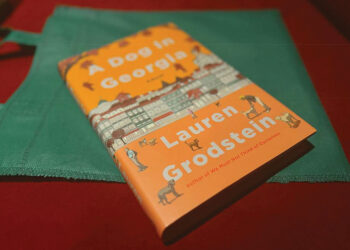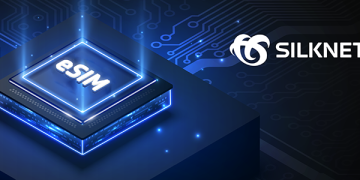Merab Kopaleishvili is a notable figure in contemporary Georgian art. His work explores visual language, symbolism, and cultural heritage. Though rooted in Georgia, his art goes beyond national and stylistic boundaries, connecting with global and postmodern ideas. This interview with Mzia Chikhradze, PhD, Senior Research fellow at the G. Chubinashvili National Research Center for Georgian Art History and Heritage Preservation, Adjunct Professor at Free University of Tbilisi, looks at the key visual and conceptual elements of his work, highlighting what makes it stand out in Georgia and appeal to audiences abroad.
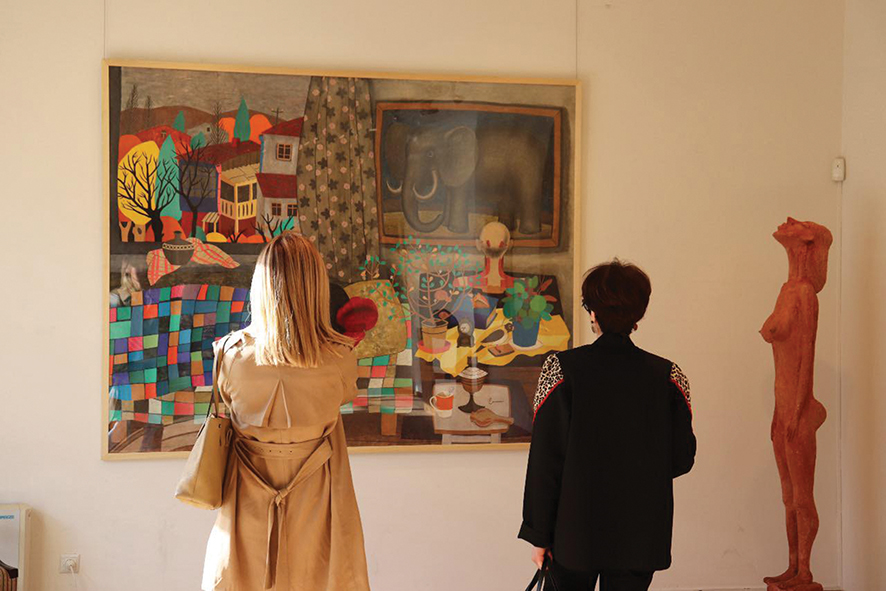
What visual and conceptual features are most characteristic of his works?
When discussing Merab Kopaleishvili’s art, it is important to consider the environment in which he creates and the context in which his work emerged.
At first glance, his art may resemble folk or naive art. However, postmodernism offers such a wide range of possibilities that it welcomes alternative artistic languages. This diversity is a defining feature of contemporary art.
Merab Kopaleishvili received an academic education, graduating from the Tbilisi State Academy of Fine Arts, and is well-versed in the principles of art, color, and painting. Nevertheless, he deliberately chooses to work in a naive visual language.
Why naive art? Take, for example, the French and Russian avant-garde artists, who deliberately turned away from academic painting and embraced simplification and primitivism. The French looked to Oceanian and African art—so-called “tribal art”—while the Russians drew inspiration from medieval iconography, folk prints (lubok), children’s drawings, and folklore. Primitive artistic language allowed for strong emotional expression and transformed simple forms into powerful means of communication. Through this style, the artist can create a direct emotional connection with the viewer. From an art historical perspective, this made perfect sense—and proved effective—at the beginning of the 20th century. The same can be said about Merab Kopaleishvili’s work.

Kopaleishvili is not simply trying to express raw emotion through naive sincerity, or to have a direct emotional impact on the viewer. Rather, he is interested in exploring deeper layers of meaning. His visual language is enriched with symbols, and his works are open to interpretation. Once again, this reflects a postmodern approach—his art doesn’t offer a single, fixed meaning. Instead, each viewer is free to discover their own interpretation, depending on their intellectual and emotional readiness.
Viewed through the lens of semiotics, his use of symbols allows him to turn artistic forms into signs. For instance, in one of his works, he paints a chair. But it is not just a chair—there is symbolic meaning embedded in it. The chair becomes a universal image, a stand-in for the world he seeks to portray. This layering of meaning, and the transformation of a simple object into a significant symbol, is a key feature of his work—and one of the things that makes it so compelling. This is what gives Kopaleishvili’s art a distinct and meaningful place within contemporary Georgian art, which itself forms part of the larger context of modern Western art.
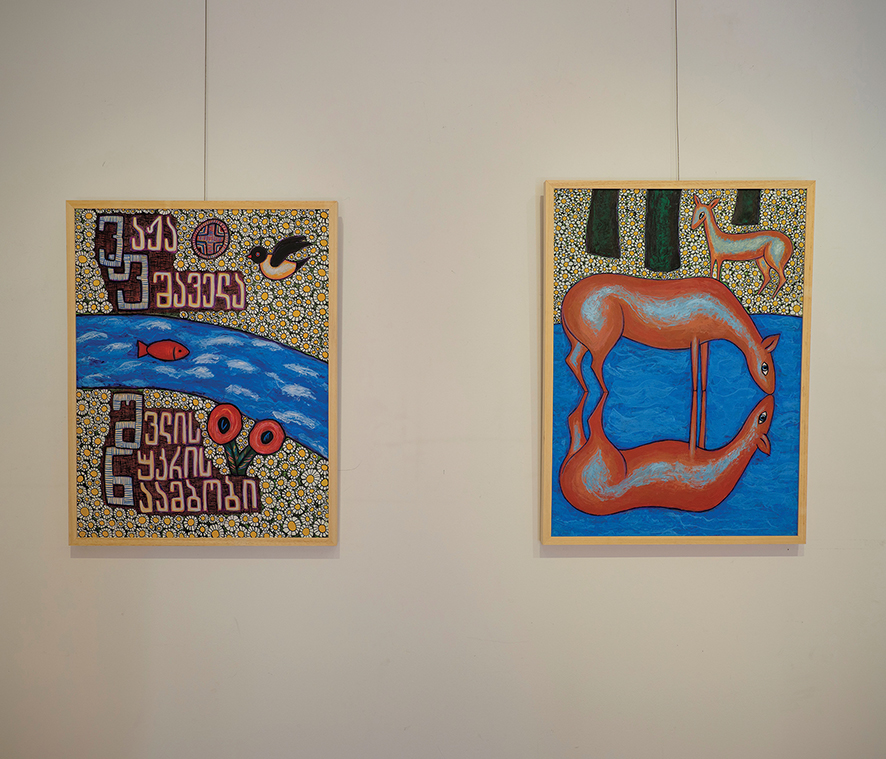
What distinguishes his painting—in form, color, texture—and how does it relate to global artistic discourses?
The distinctive feature of his artistic language is its simplicity—he intentionally uses simplified forms to convey meaning. In his work, form, color, and line are not treated as separate elements. What matters is that these elements come together into a generalized image, and it’s this conceptual generalization that gives his art its power.
Take, for example, The Tale of the Roe – the deer that was killed. This isn’t just an image of a deer lying among flowers. There is a pool of blood—a red mark—that transforms the scene. The level of abstraction and symbolism is so strong that the image becomes one of universal pain and sorrow. The red spot is striking, even disturbing—it pierces the viewer emotionally. It’s no longer just about a deer or daisies. The red mark appears to spread into the flowers, turning them into a symbol of collective grief. It becomes a representation of death itself.

On the formal side—his visual “language”—he often uses mixed media. In his paintings, collage is frequently integrated. For instance, the meadow of daisies might be painted in such a way that it’s hard to tell whether it was done entirely with paint or with collage elements. As you look closer, you realize that the artist created such texture. The same goes for the chair: from a distance, it may look like a painted cloth texture, but upon closer inspection, you find that it includes actual fabric attached using collage techniques. This creates a kind of visual play—a shifting between reality and image, between imitation and the real. This playful dynamic animates the surface of his work. It pulls the viewer in, encouraging observation and recognition. This element of playfulness is also a hallmark of contemporary art. His visual language—expressive, layered, and self-aware—fits clearly within the postmodern and global artistic context.
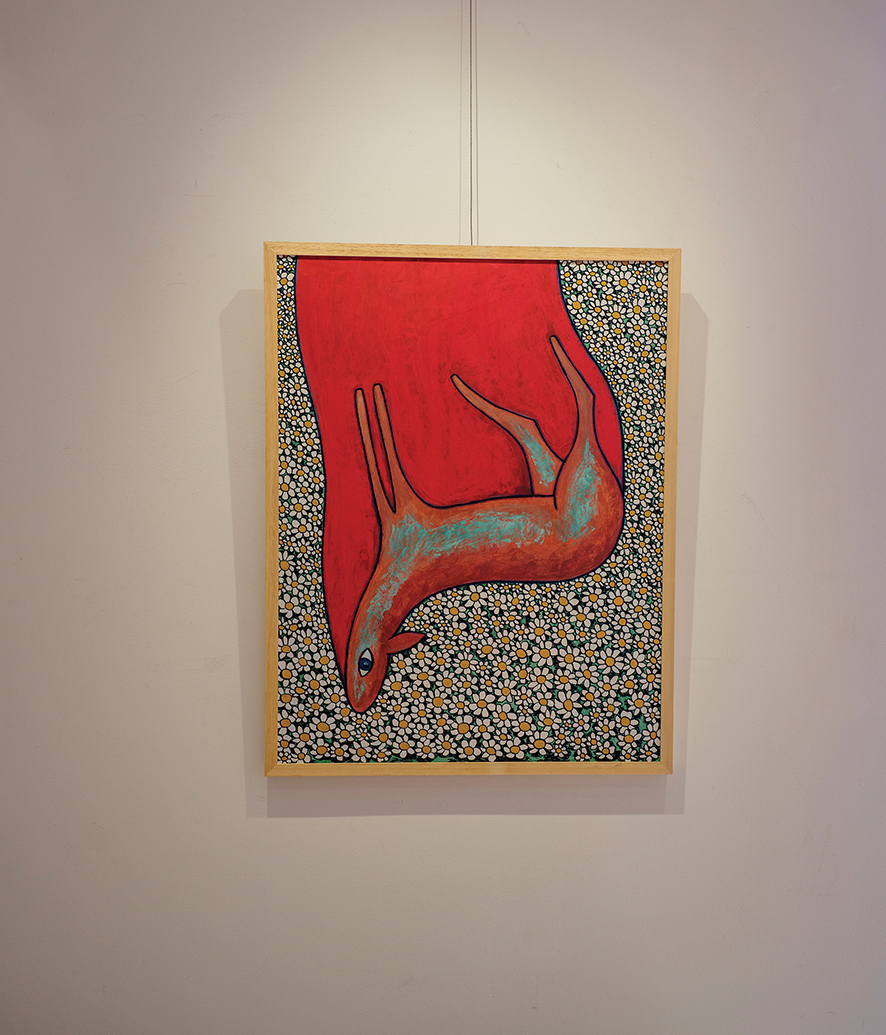
How can an international audience perceive his work? What unique qualities or inner strength does his art possess that can transcend borders and attract global attention?
He fits seamlessly into the diverse and layered landscape of postmodern art. But there’s also an additional dimension to consider—his background. Georgia, while home to many talented artists known in Europe, still remains somewhat unexplored for much of the international art world. For many, it retains a sense of the unfamiliar or even the exotic. Within this context, Kopaleishvili stands out as an artist who leaves a profound mark through his work. In his art, we can trace echoes of Georgian folklore, medieval iconography, Pirosmani’s influence, tombstone carvings, and traditional engraving. He weaves all of these elements into a distinctive visual language. At the same time, he is a deeply thoughtful and intellectual artist, with a strong foundation in literature and art history—something that clearly informs his work.
This cultural depth, combined with a national aesthetic rooted in Georgian tradition, gives his art a richness that resonates beyond local borders. His work has already received positive attention abroad, generating both interest and strong sales. That response is a reflection of how many dimensions his art brings together—and why it has the power to speak to a global audience.
By Kesaria Katcharava



